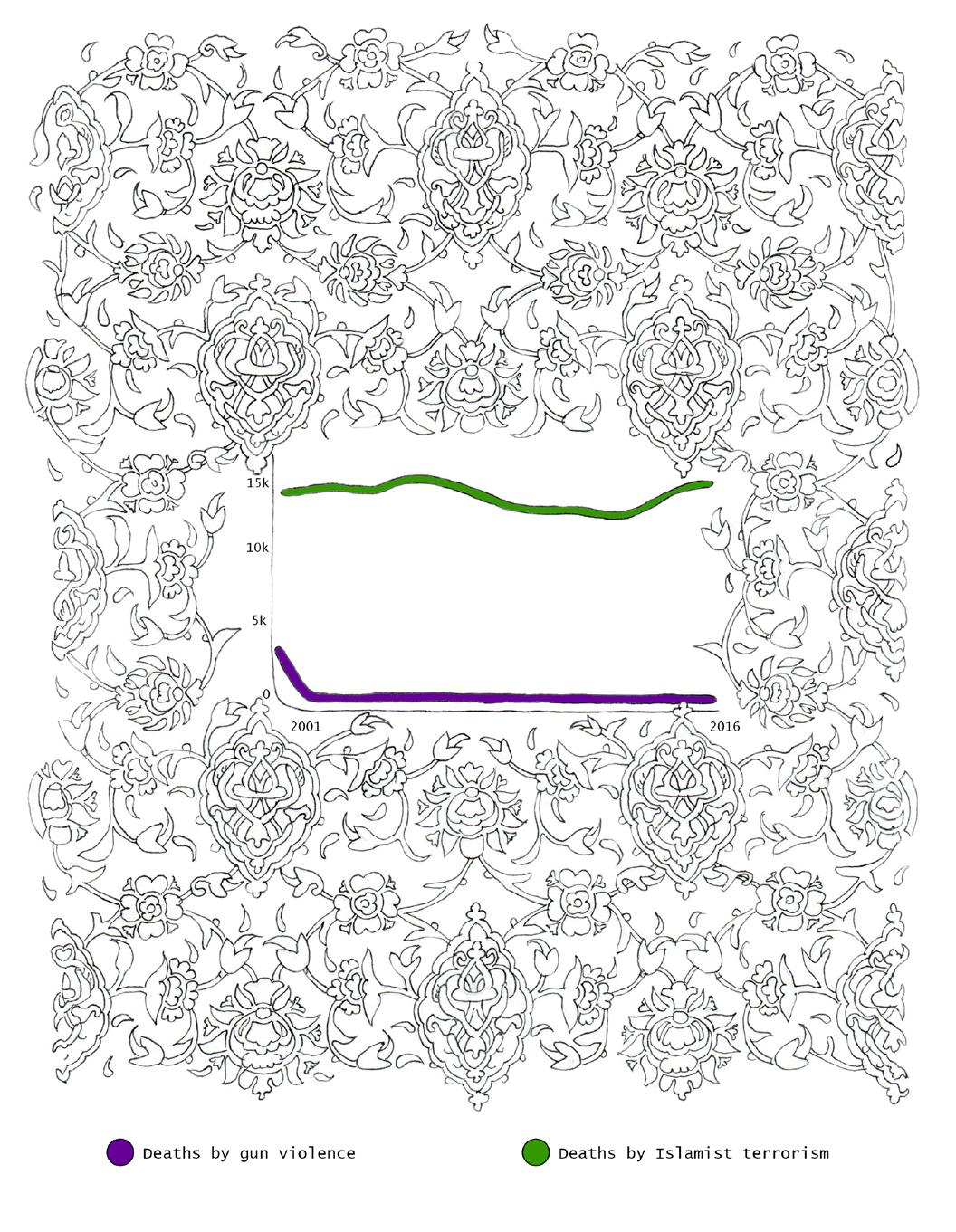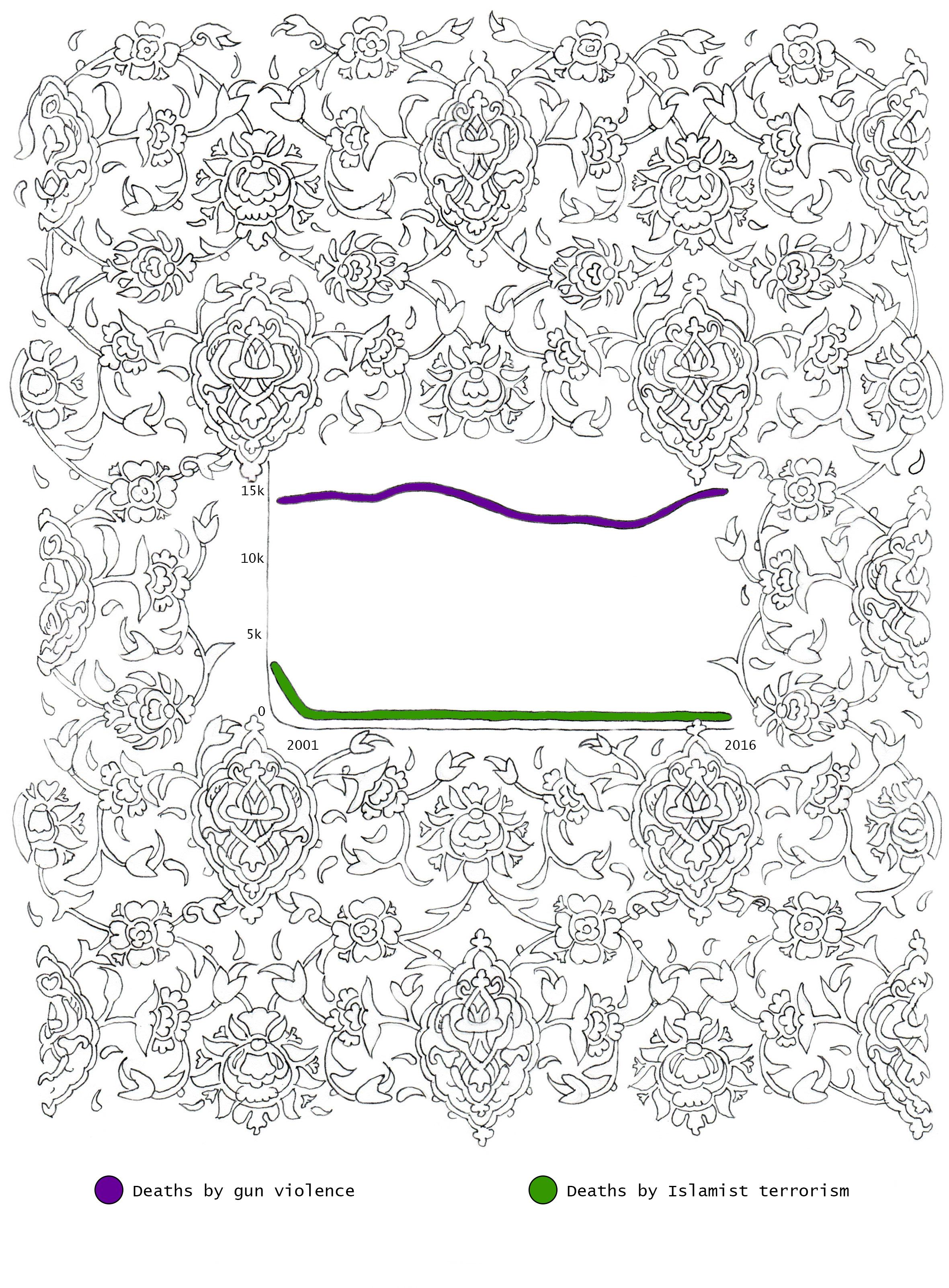
6 minute read
Martine Gutierrez
Helene Nymann
By Jacqueline Kok
Advertisement
Who Are We?
Butoh dance is raw. It subverts the established systems of knowledge and harmony that Japanese aesthetics are renowned for. Rather than obey the conventions of dance, Butoh demands that its dancer succumb to the darkness. The dancer embraces the crude, innate, and unrefined, while still remaining earthbound. The performance thus becomes confrontational in its interaction with space, senses, and emotions. Charged and often bewildering, Butoh dance seeks to articulate the dancer’s movement as movement that exists prior to established knowledge in a slow, unconscious state of expression.
As a special addition to the exhibition, invited Butoh dancer Vangeline, founder of the Vangeline Theater and the New York Butoh Institute in New York City, activates the space, pulling viewers into an introspective and self-reflexive realm both mentally and physically. Carrying Butoh dance into the twenty-first century, Vangeline incorporates social activism, touching upon important subject matter such as feminism, climate change, war, and perceptions of gender, infusing drag elements into her performances. A master of her craft, Vangeline intimately explores the inner self through Butoh dance.
This energy is further captured in Helene Nymann’s Whether We Are (2016), a mesmerizing video of human metamorphosis. In a world covered with soot, a body slowly awakens and emerges from the soil, morphing and contorting as fluorescent green dust falls from above. The protagonist, a classically trained ballet dancer, was asked to respond to the immediate environment viscerally rather than through premeditated choreography.
Whether We Are examines the body as it endures times of change. In particular, it focuses on how external circumstances may impact the mental and physical state of the self. In relation to embodied knowledge—a type of knowledge where the body innately knows how to act—viewers are left wondering how the environment and other surrounding materials affect these experiences. Using video as a medium, Nymann also explores the relationship between movement, images, and memory in regard to embodied knowledge. The performative environment that encapsulates motion, sound, and sculpture becomes hypnotic, causing us to slip between states of consciousness. The ethereal, trance-like music enhances this experience by mimicking the effects of meditative chants, pulling us even further into our thoughts and feelings.
As we watch the video, we become aware of our own physical and mental state. Because the work’s presence, music, and scale contribute to this hypervigilance, we soon find ourselves acting more as participants in Nymann’s piece than as its audience. In this moment of transition for all the bodies within and in dialogue with the work, we see how Nymann makes her connection to Butoh. The dancer, rather than performing according to a choreographed ballet routine, yields to his body and the environment, moving freely in space. Almost in response to his actions as well as to what we are shown, our personal past and current events also start to inform our own bodily and cognitive reactions to the piece and, by proxy, the world around us.
The distinctions between the conscious, the subconscious, and the unconscious become blurred in Nymann’s work, much like in Butoh dance. This indetermination prompts us to reflect upon the differences between knowledge that is acquired and that which is elementally ingrained. Our bodies are subject to constant change, and we struggle to adapt to every single advancement, development, and shift that occurs in our daily lives. It thus becomes worth asking what we have been acquainted with, and whether we are who we think we are.

Helene Nymann, Whether We Are, 16:9 HDV, 10:10 mins with sound, 2016.
Bita Razavi
By Noelia Lecue
Coloring books are now the fashion among adults; they are the gift par excellence on Mother’s Day, the perfect souvenir of expensive hotel chains attempting to relate the act of coloring with stays of rest or travel, away from the daily routine. The benefits of coloring are sold as remedies for depression, new solutions for dependency on phones and other electronic devices. Coloring books have become so popular that recent studies have analyzed the links among coloring, relaxation, and the comfort of childhood leisure. For Coloring Book for Concerned Adults (2017), Bita Razavi purposely chooses coloring books as a medium to reach a broader public, one that is more diverse than the average gallery and museum visitors: an audience with divergent political orientations. She believes that showing contrasting political views can develop more effective and deeper dialogues. As demonstrated by her past work Some Critique from Our Parents (2015), the artist is concerned about art’s function of connecting different perspectives and inspiring people who consider themselves irrelevant to art. The artist encourages viewers to venture outside the big, engulfing bubble of the art world. By adding color to an image, one feels they’ve mastered it through a repetitive and mindful act. Razavi’s work uses the coloring book as a tool for relieving stress and for inspiring a sense of artistic confidence. However, in her work, the artist is led to graphs with a political charge. In doing so, she aims to prove that coloring books are not necessarily escapist, but can also bring one back to crucial, personal realities. In fact, as an Iranian-born artist and Fin- nish citizen who now resides in the US, her travel and indeed her everyday life are impacted by the so-called “Muslim travel ban.” This is not the first time that Razavi’s work has dealt with her own geopolitical context; the artist left Tehran and moved to Finland in 2007 as a result of a populist candidate winning the 2005 elections in Iran. In 2011, she presented How To Do Things With Words (A Legal Performance), a legal act as well as an artistic performance that addressed her personal and political circumstances after pre- judiced policies threatened her immigration status in the wake of an election victory by the True Finns Party in Finland. Razavi’s coloring book allows people to choose their own color for the graphs and so gives them creative authority over these abstract data. As a participant completes the image, they bring to life their own conception of land and boundaries. Your map within your territory, your coloring book as a piece of information, transforms this relaxed state of mind and potentially establishes values of empathy for the people affected by the travel ban. The graphs selected for the exhibition are just some of the multiple concerns that the artist is compiling into a book that will soon be published: Coloring Book for Concerned Adults. All the information collected in this forthcoming publication is extracted from daily online news, but in this case the participant needs to interpret the data, and construct their own map legend. The coloring book turns into a “quiz” questioning the tolerance of a country that is politically attacking human rights while promoting racism through its daily news. Under current circumstances, it is difficult to find any spark of hope. However, Razavi presents a persistent, valuable, and thoughtful work that also informs spectators about her particular circumstan- ces. Providing printouts of existing, but uncolored, data charts related to the travel ban, visitors decide on the color allocation for the charts. Their decisions modify the interpretation of information.


Bita Razavi, Coloring Book for Concerned Adults, Pen on paper, Adobe Photoshop, 2017.






